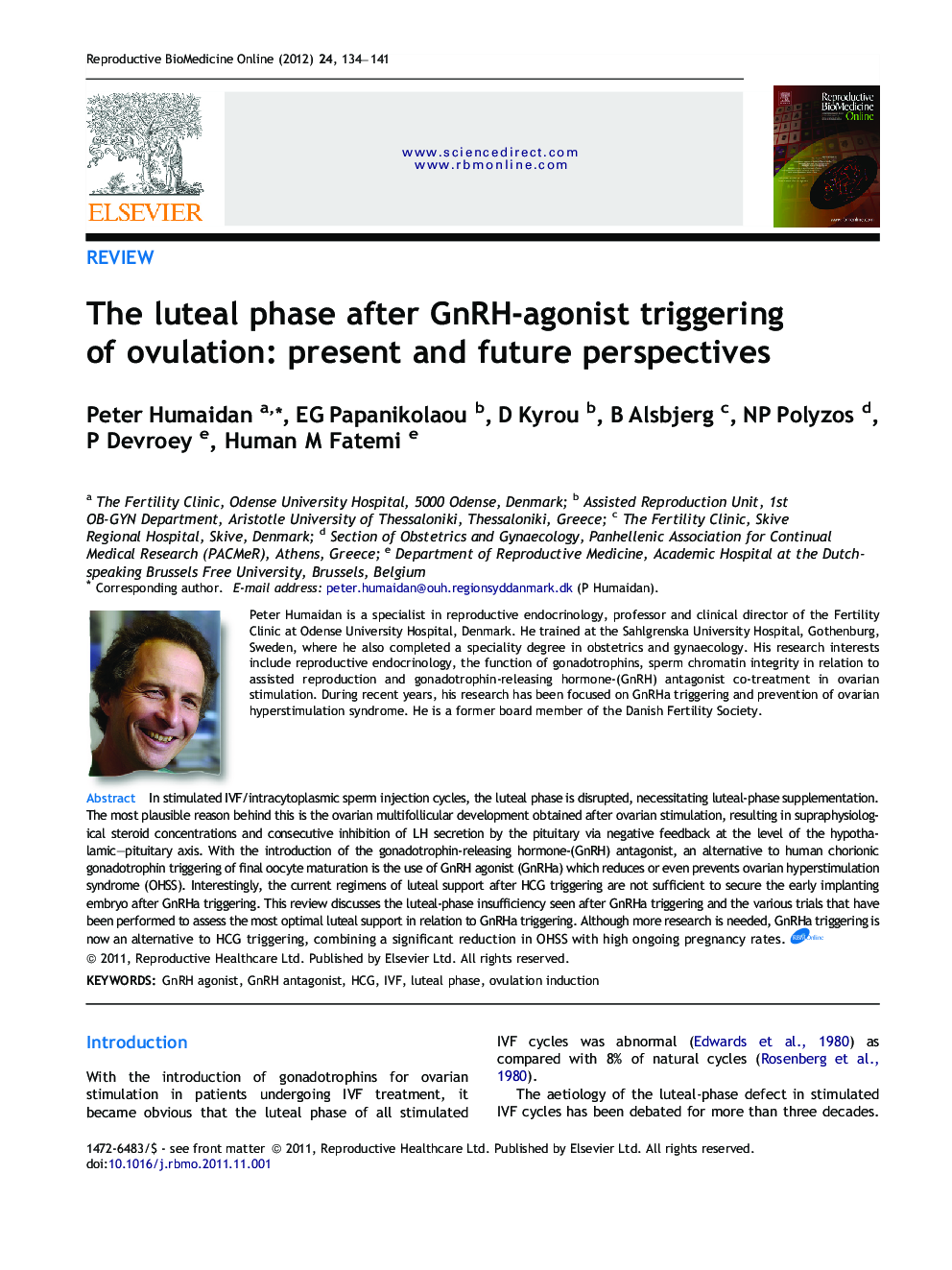| کد مقاله | کد نشریه | سال انتشار | مقاله انگلیسی | نسخه تمام متن |
|---|---|---|---|---|
| 3971168 | 1256753 | 2012 | 8 صفحه PDF | دانلود رایگان |

In stimulated IVF/intracytoplasmic sperm injection cycles, the luteal phase is disrupted, necessitating luteal-phase supplementation. The most plausible reason behind this is the ovarian multifollicular development obtained after ovarian stimulation, resulting in supraphysiological steroid concentrations and consecutive inhibition of LH secretion by the pituitary via negative feedback at the level of the hypothalamic–pituitary axis. With the introduction of the gonadotrophin-releasing hormone-(GnRH) antagonist, an alternative to human chorionic gonadotrophin triggering of final oocyte maturation is the use of GnRH agonist (GnRHa) which reduces or even prevents ovarian hyperstimulation syndrome (OHSS). Interestingly, the current regimens of luteal support after HCG triggering are not sufficient to secure the early implanting embryo after GnRHa triggering. This review discusses the luteal-phase insufficiency seen after GnRHa triggering and the various trials that have been performed to assess the most optimal luteal support in relation to GnRHa triggering. Although more research is needed, GnRHa triggering is now an alternative to HCG triggering, combining a significant reduction in OHSS with high ongoing pregnancy rates.Stimulation of the ovaries for IVF treatment induces the growth of multiple follicles, resulting in the aspiration of several oocytes. During the early years of IVF treatment it became obvious that the stimulation per se induced an unphysiological hormonal level during the luteal phase – the phase after egg transfer – necessitating hormonal support with vaginally applied progesterone to obtain ongoing pregnancies. With the introduction of the gonadotrophin-releasing hormone (GnRH) antagonist protocol (short protocol) it became possible to perform final oocyte maturation with a GnRH agonist instead of human chorionic gonadotrophin (HCG). The first studies applying this concept, however, showed a very poor pregnancy rate, despite standard luteal-phase support with progesterone. This review discusses the reason for the poor results and the newest studies, using GnRH agonist instead of HCG, now showing a normalization of pregnancy rates due to modifications of the luteal-phase support and with the benefit of a protocol which has a reduced risk of ovarian hyperstimulation syndrome.
Journal: Reproductive BioMedicine Online - Volume 24, Issue 2, February 2012, Pages 134–141